247 scholarly books by University Press of New England and 15
have author last names that start with L
247 scholarly books by University Press of New England and 15
247 scholarly books by University Press of New England
15 have author last names that start with L have author last names that start with L
15 have author last names that start with L have author last names that start with L

No Sanctuary
Teachers and the School Reform That Brought Gay Rights to the Masses
Stephen Lane
University Press of New England, 2018
School can be a special sort of nightmare for LGBTQ youth, who are sometimes targets of verbal or physical harassment with nowhere to turn for support. No Sanctuary tells the inspiring story of a mostly unseen rescue attempt by a small group of teachers who led the push to make schools safer for these at-risk students. Their efforts became the blueprint for Massachusetts’s education policy and a nationwide movement, resulting in one of the most successful and far-reaching school reform efforts in recent times. Stephen Lane sheds light on this largely overlooked but critical series of reforms, placing the Safe Schools movement within the context of the larger gay rights movement and highlighting its key role in fostering greater acceptance of LGBTQ individuals throughout society.
[more]
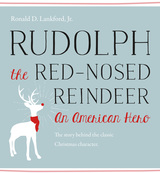
Rudolph the Red-Nosed Reindeer
An American Hero
Ronald D. Lankford
University Press of New England, 2016
Ronald D. Lankford has written the definitive history of this iconic and much-loved Christmas character. Rudolph the Red-Nosed Reindeer was the creation of Robert May, a staff copywriter who wrote the original poem as a Montgomery Ward Christmas giveaway in 1939. More than 2.4 million copies were printed and given away that holiday season. Thus the legend began. Johnny Marks adapted the poem into what would become the Gene Autry hit “Rudolph the Red-Nosed Reindeer,” which instantly became—and still remains—one of the most popular Christmas songs of all time. The legend of Rudolph soared even higher with the Rankin/Bass stop-motion television special in 1964, which has gone on to inspire a cottage industry of toys and decorative items. In this festive and informed look at the most famous reindeer of all, Lankford discusses all of Rudolph’s iterations, including comic books, sequels, advertising tie-ins, movies, and much more. Lankford has produced the first complete history of Rudolph that both celebrates and explains the undying popularity of Rudolph and his friends. The result is both a glowing tribute and a rigorously researched biography that will appeal to fans and lovers of classic American holiday culture.
[more]

Anne Lapidus Lerner
University Press of New England
The biblical accounts of Eve's life are central to Western culture, occupying a privileged place in our literature and art, culture, and society. For both Judaism and Christianity, these stories involving Eve have for centuries been entangled with the religious and social construction of gender. The ambiguous biblical record of her life from the two versions of her creation, through her encounter with the forbidden fruit, to her expulsion from Eden, and followed by the tantalizing glimpses of her life in the real world has served through the ages as a mirror of commonly held views about women. For Jewish readers, Eve's role as metonym -- signifying womanhood, or Jewish womanhood, as a whole -- is of prime importance. By tracing the imagined character of Eve from ancient times to the present, Eternally Eve opens a window on the transmission and persistence of cultural and social values. Eternally Eve takes as its subject the many ways these stories can be read, interpreting the biblical narratives as well as their iteration by rabbinic midrashists and modern poets. Anne Lapidus Lerner argues that we must set aside, or at least rethink, a series of assumptions about Eve that have been dominant in Jewish thought for centuries and instead return to the original texts to rediscover meanings implicit in them. Using modern poetry about Eve as a touchstone for reinterpreting older texts, Lerner discovers that Genesis is often more open to contemporary values than are later rabbinic texts. Linking sacred texts to works of the classical and modern imagination, Lerner restores to her sources meanings suppressed or neglected over many years and demonstrates their power to speak today.
[more]

Air Officer Commanding
Hugh Dowding, Architect of the Battle of Britain
John T. LaSaine
University Press of New England, 2018
Hugh Dowding may be described as the prime architect of British victory in the battle of Britain, and thus as one of a handful of officers and men most responsible for ensuring that Hitler’s planned invasion of England never occurred. Dowding was born in 1882 at the apex of British imperial power and had an early career as a gunner on the fabled North-West Frontier of the British Indian Empire. During the first year of World War I, he served with distinction as a combat pilot in France, but his real test would come in 1936, when he was assigned the critical task of reorganizing the Air Defense of Great Britain as the first air officer commanding-in-chief of the new RAF Fighter Command. In that capacity he stood up to senior staff—and Winston Churchill—by preventing the dismantling of British air defenses during the Battle of France in the spring of 1940, defying pressure from the British Army, Britain’s French allies, and His Majesty’s Government to send the bulk of the RAF’s front-line fighters to the Continent in what Dowding predicted would be a futile effort to stem the German onslaught. While holding back as many of his best fighter aircraft as he could, in June Dowding deployed 11 Group under his hand-picked lieutenant, Air Vice-Marshal Keith Park, to repulse the Luftwaffe over Dunkirk, covering the evacuation of some 338,000 British and French troops from the Continent. During the three months of fighting known as the Battle of Britain, the integrated air defense system organized and trained by Dowding fought the vaunted Luftwaffe to a standstill in daylight air-to-air combat. In October, the Germans abandoned their attempt to win a decisive battle for air superiority over England, turning instead to the protracted campaign of attrition by nighttime area bombing known as the Blitz. In building, defending, and overseeing the operations of Fighter Command, Dowding was thus not only one of the master builders of air power, but also the only airman to have been the winning commander in one of history’s decisive battles.
[more]
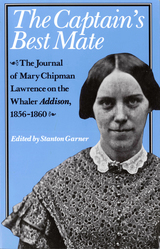
The Captain’s Best Mate
The Journal of Mary Chipman Lawrence on the Whaler Addison, 1856–1860
Mary Chipman. Lawrence
University Press of New England, 1986
The diary of a wife who, with their five-year old daughter, accompanied her husband on a three-and-a-half year whaling voyage.
[more]
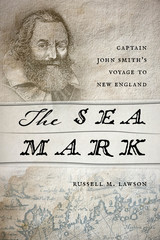
The Sea Mark
Captain John Smith’s Voyage to New England
Russell M. Lawson
University Press of New England, 2015
By age thirty-four Captain John Smith was already a well-known adventurer and explorer. He had fought as a mercenary in the religious wars of Europe and had won renown for fighting the Turks. He was most famous as the leader of the Virginia Colony at Jamestown, where he had wrangled with the powerful Powhatan and secured the help of Pocahontas. By 1614 he was seeking new adventures. He found them on the 7,000 miles of jagged coastline of what was variously called Norumbega, North Virginia, or Cannada, but which Smith named New England. This land had been previously explored by the English, but while they had made observations and maps and interacted with the native inhabitants, Smith found that “the Coast is . . . even as a Coast unknowne and undiscovered.” The maps of the region, such as they were, were inaccurate. On a long, painstaking excursion along the coast in a shallop, accompanied by sailors and the Indian guide Squanto, Smith took careful compass readings and made ocean soundings. His Description of New England, published in 1616, which included a detailed map, became the standard for many years, the one used by such subsequent voyagers as the Pilgrims when they came to Plymouth in 1620. The Sea Mark is the first narrative history of Smith’s voyage of exploration, and it recounts Smith’s last years when, desperate to return to New England to start a commercial fishery, he languished in Britain, unable to persuade his backers to exploit the bounty he had seen there.
[more]
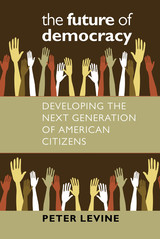
The Future of Democracy
Developing the Next Generation of American Citizens
Peter Levine
University Press of New England, 2015
We need young people to be civically engaged in order to define and address public problems. Their participation is important for democracy, for institutions such as schools, and for young people themselves, who are more likely to succeed in life if they are engaged in their communities. In The Future of Democracy, Peter Levine, scholar and practitioner, sounds the alarm: in recent years, young Americans have become dangerously less engaged. They are tolerant, patriotic, and idealistic, and some have invented such novel and impressive forms of civic engagement, as blogs, “buycott” movements, and transnational youth networks. But most lack the skills and opportunities they need to participate in politics or address public problems. Levine’s timely manifesto clearly explains the causes, symptoms, and repercussions of this damaging trend, and, most importantly, the means whereby America can confront and reverse it. Levine demonstrates how to change young people’s civic attitudes, skills, and knowledge and, equally importantly, to reform our institutions so that civic engagement is rewarding and effective. We must both prepare citizens for politics and improve politics for citizens.
[more]

The Rhetoric of Modernist Fiction
From a New Point of View
Morton Levitt
University Press of New England, 2005
Though it has been one of the most influential critical works of the last fifty years, Wayne Booth’s The Rhetoric of Fiction has disappointed many readers in its treatment of modernism. Despite Booth’s astute and influential readings of earlier novels, his system shed little light on the experiments in point of view that characterize many more recent works. Despite a revision some two decades after its first publication, the book continues to strike many readers as outdated in its choices of authors and texts. In a bold updating of that seminal work, Morton P. Levitt, long-time editor of the Journal of Modern Literature, explores the rhetoric of point of view in modernist and post-modernist novels, offering new insights into some of the greatest works of the last century. As the editor of one of the most important journals in the field, Levitt has been uniquely situated to absorb and reflect critically upon the most significant scholarship on modernist fiction. In a series of subtle, persuasive readings, he demonstrates that the rejection of omniscience is one of the defining characteristics of modernist and post-modernist novels. From Joyce and Woolf to Philip Roth, Don DeLillo, and José Saramago, Levitt discusses a wide range of texts in readings that will be accessible to students and invaluable to scholars.
[more]
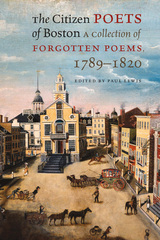
The Citizen Poets of Boston
A Collection of Forgotten Poems, 1789–1820
Paul Lewis
University Press of New England, 2016
Welcome to Boston in the early years of the republic. Prepare to journey by stagecoach with a young man moving to the “bustling city”; stop by a tavern for food, drink, and conversation; eavesdrop on clerks and customers in a dry-goods shop; get stuck in what might have been Boston’s first traffic jam; and enjoy arch comments about spouses, doctors, lawyers, politicians, and poets. As Paul Lewis and his students at Boston College reveal, regional vernacular poetry—largely overlooked or deemed of little or no artistic value—provides access to the culture and daily life of the city. Selected from over 4,500 poems published during the early national period, the works presented here, mostly anonymous, will carry you back to Old Boston to hear the voices of its long-forgotten citizen poets. A rich collection of lost poetry that will beguile locals and visitors alike.
[more]
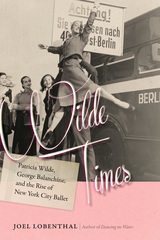
Wilde Times
Patricia Wilde, George Balanchine, and the Rise of New York City Ballet
Joel Lobenthal
University Press of New England, 2016
At eighty-seven, Patricia Wilde remains a grande dame of the ballet world. As a young star she toured America in the company of the Ballet Russe. In her heyday in the 1950s and ’60s, she was a first-generation member and principal dancer of New York City Ballet during the uniquely dramatic Balanchine era—the golden age of the company and its hugely gifted, influential, exploitative, and dictatorial director. In Wilde Times, Joel Lobenthal brings the world of Wilde and Balanchine, of Tanaquil Le Clercq, Diana Adams, Suzanne Farrell, Maria Tallchief, and many others thrillingly to life. With unfettered access to Wilde and her family, friends, and colleagues, Lobenthal takes the reader backstage to some of the greatest ballet triumphs of the modern era—and some of the greatest tragedies. Through it all Patricia Wilde emerges as a figure of towering strength, grace, and grit. Wilde Times is the first biography of this seminal figure in American dance, written with the cooperation of the star, but wide-ranging in its use of sources to tell the full and intertwining stories of the development of Wilde, of Balanchine, and of American national ballet at its peak in the twentieth century.
[more]
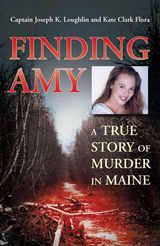
Finding Amy
A True Story of Murder in Maine
Joseph K. Loughlin
University Press of New England, 2011
Combining the drama of a true crime story with the detail of a police procedural, Finding Amy chronicles the investigation into one of the most shocking murders in recent Maine history. Twenty-five-year-old Amy St. Laurent was attractive, intelligent, and responsible. One October evening, she went out to show a friend from Florida the exciting nightlife of Portland’s Old Port section. She played pool. She danced. And then she disappeared. The police investigation into her murder riveted the state of Maine for months. This inside account of the investigation alternates between Kate Clark Flora’s objective tale of dedicated police work and the dramatic recollections of then-Lieutenant Joseph K. Loughlin, who oversaw the case. From the first call to a Portland detective about a missing woman to the police’s growing certainty that she had been murdered, from the heroic efforts to locate the body to the flight from Maine of their chief suspect, and from the painstaking work of collecting evidence and building a case to the struggles over jurisdictional questions to the twists and turns of the eventual trial, Finding Amy is a dramatic story of brutal murder and exemplary police work.
[more]
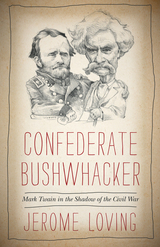
Confederate Bushwhacker
Mark Twain in the Shadow of the Civil War
Jerome Loving
University Press of New England, 2013
Confederate Bushwhacker is a microbiography set in the most important and pivotal year in the life of its subject. In 1885, Mark Twain was at the peak of his career as an author and a businessman, as his own publishing firm brought out not only the U.S. edition of Adventures of Huckleberry Finn but also the triumphantly successful Personal Memoirs of U. S. Grant. Twenty years after the end of the Civil War, Twain finally tells the story of his past as a deserter from the losing side, while simultaneously befriending and publishing the general from the winning side. Coincidentally, the year also marks the beginning of Twain’s descent into misfortune, his transformation from a humorist into a pessimist and determinist. Interwoven throughout this portrait are the headlines and crises of 1885—black lynchings, Indian uprisings, anti-Chinese violence, labor unrest, and the death of Grant. The year was at once Twain’s annus mirabilis and the year of his undoing. The meticulous treatment of this single year by the esteemed biographer Jerome Loving enables him to look backward and forward to capture both Twain and the country at large in a time of crisis and transformation.
[more]
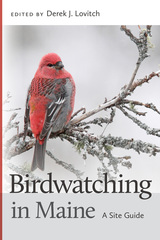
Derek J. Lovitch
University Press of New England
With nearly 450 species of birds recorded, Maine offers an abundance of birding opportunities for people of all levels of interest and experience, from those looking beyond their backyards for the first time to knowledgeable visitors looking to plug a hole in their list of sightings. The state’s wealth of undeveloped land and its extensive coastline, countless islands, and varied habitat combine to host an impressive diversity of birds at all times of year. Birders travel to Maine from near and far to seek hard-to-find species, from the only Atlantic Puffins breeding in the United States on offshore islands to Bicknell’s Thrushes high in the mountains. This book fills an important niche for the birdwatching community by offering comprehensive entries detailing the best locations for finding birds throughout the state for enthusiasts of all levels of skill and interest. It contains descriptions of 201 birding sites in Maine, with explicit directions on how to get there, for all sixteen of the state’s counties (several as large as other New England states!). Each chapter features a county map, a brief overview by Derek J. Lovitch, numerous specific site guides, and a list of rarities. The book also contains a detailed and useful species accounts guide for finding the most sought-after birds. Lavishly illustrated in color throughout, Birdwatching in Maine is the best available resource for finding birds in the largest of the New England states. Contributors: Derek Lovitch Kirk Betts Dan Nickerson John Berry Allison Childs Wells Jeffrey V. Wells Herb Wilson Kristen Lindquist Seth Benz Rich MacDonald Ron Joseph Luke Seitz
[more]
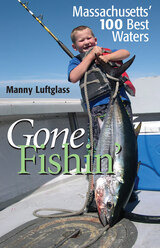
Gone Fishin’
Massachusetts’ 100 Best Waters
Manny Luftglass
University Press of New England, 2008
From catching rainbows, browns, and brookies in the streams and rivers of the Berkshires to hauling in cod, haddock, and tuna in the salt waters of Stellwagen Bank, this book is your ultimate guide to fishing in Massachusetts. Manny Luftglass, a veteran fisherman and journalist, has written a definitive and entertaining guide to fishing the salt, fresh, and brackish waters of the Bay State. Providing easy-to-follow directions, boat launch information, and detailed advice on live and dead baits, artificial lures, fishing methods, equipment, depths, weather, best times of the day and the year, and even specific areas to fish at most locations, this is truly the only fishing guide to Massachusetts you’ll ever need. For ease of use, the book has been organized according to the areas recognized by the Massachusetts Department of Fisheries and Wildlife, with an accompanying map for each section. Good-humored and packed to the gills with useful information, it’s like having the author as your personal fishing guide.
[more]

Civic Agriculture
Reconnecting Farm, Food, and Community
Thomas A. Lyson
University Press of New England, 2004
While the American agricultural and food systems follow a decades-old path of industrialization and globalization, a counter trend has appeared toward localizing some agricultural and food production. Thomas A. Lyson, a scholar-practitioner in the field of community-based food systems, calls this rebirth of locally based agriculture and food production civic agriculture because these activities are tightly linked to a community’s social and economic development. Civic agriculture embraces innovative ways to produce, process, and distribute food, and it represents a sustainable alternative to the socially, economically, and environmentally destructive practices associated with conventional large-scale agriculture. Farmers’ markets, community gardens, and community-supported agriculture are all forms of civic agriculture. Lyson describes how, in the course of a hundred years, a small-scale, diversified system of farming became an industrialized system of production and also how this industrialized system has gone global. He argues that farming in the United States was modernized by employing the same techniques and strategies that transformed the manufacturing sector from a system of craft production to one of mass production. Viewing agriculture as just another industrial sector led to transformations in both the production and the processing of food. As small farmers and food processors were forced to expand, merge with larger operations, or go out of business, they became increasingly disconnected from the surrounding communities. Lyson enumerates the shortcomings of the current agriculture and food systems as they relate to social, economic, and environmental sustainability. He then introduces the concept of community problem solving and offers empirical evidence and concrete examples to show that a re-localization of the food production system is underway.
[more]
READERS
Browse our collection.
PUBLISHERS
See BiblioVault's publisher services.
STUDENT SERVICES
Files for college accessibility offices.
UChicago Accessibility Resources
home | accessibility | search | about | contact us
BiblioVault ® 2001 - 2024
The University of Chicago Press









